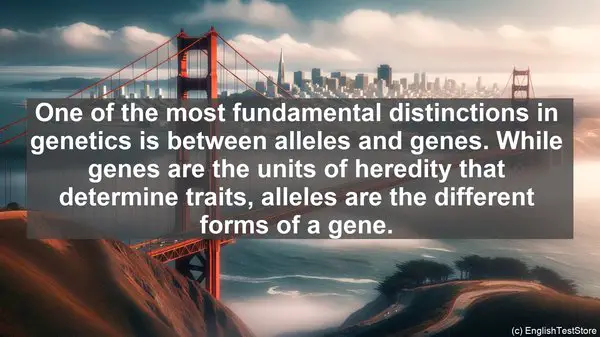Introduction
Welcome to today’s lesson on conservation genetics. In this lesson, we’ll be discussing the top 10 commonly confused words in this field. Understanding these terms is crucial for a solid foundation in conservation genetics. So, let’s dive in!
1. Allele vs. Gene
One of the most fundamental distinctions in genetics is between alleles and genes. While genes are the units of heredity that determine traits, alleles are the different forms of a gene. For example, the gene for eye color may have alleles for blue, brown, or green eyes. Understanding this distinction is vital for studying genetic variation in populations.
2. Homozygous vs. Heterozygous
Homozygous and heterozygous refer to the presence of the same or different alleles, respectively, at a particular gene locus. Homozygous individuals have two identical alleles, while heterozygous individuals have two different alleles. This distinction is crucial when studying inheritance patterns and genetic diversity.
3. Genotype vs. Phenotype
Genotype and phenotype are terms often used in genetics. Genotype refers to the genetic makeup of an organism, while phenotype refers to its observable characteristics. For example, while two individuals may have the same genotype for a particular trait, their phenotypes may differ due to environmental factors.
4. Inbreeding vs. Outbreeding
Inbreeding and outbreeding are two contrasting breeding strategies. Inbreeding involves mating between closely related individuals, leading to a reduction in genetic diversity. Outbreeding, on the other hand, involves mating between unrelated individuals, promoting genetic variation. Both strategies have implications for population health and adaptation.
5. Genetic Drift vs. Gene Flow
Genetic drift and gene flow are two important processes that shape population genetics. Genetic drift refers to the random changes in allele frequencies due to chance events, especially in small populations. Gene flow, on the other hand, is the movement of genes between populations, which can introduce new alleles and increase genetic diversity.

6. Bottleneck vs. Founder Effect
Bottleneck and founder effect are two types of genetic drift. A bottleneck occurs when a population undergoes a drastic reduction in size, leading to a loss of genetic diversity. The founder effect, on the other hand, happens when a small group of individuals establishes a new population, potentially with a different genetic composition than the source population.

7. Endangered vs. Threatened
When it comes to species conservation, the terms ‘endangered’ and ‘threatened’ are often used. While both indicate a risk of extinction, ‘endangered’ refers to a species that is at a higher risk, with a very small population size. ‘Threatened’ species, although not as critically endangered, still face significant risks and require conservation efforts.
8. Conservation vs. Preservation
Conservation and preservation are two approaches to managing natural resources. Conservation aims to sustainably use resources while minimizing environmental impact. Preservation, on the other hand, emphasizes protecting nature in its pristine state, often through strict regulations. Both approaches are important for maintaining biodiversity and ecosystem services.
9. Ex situ vs. In situ Conservation
Ex situ and in situ conservation are two strategies for preserving biodiversity. Ex situ conservation involves the removal of species from their natural habitat, such as in zoos or seed banks. In situ conservation, on the other hand, focuses on protecting species in their natural habitats. Both approaches have their advantages and are often used in combination.
10. Genetic Erosion vs. Genetic Pollution
Genetic erosion and genetic pollution are terms used to describe the loss or alteration of genetic diversity. Genetic erosion refers to the gradual loss of genetic variation within a population, often due to habitat fragmentation or overexploitation. Genetic pollution, on the other hand, occurs when genes from genetically modified organisms or non-native species enter a population, potentially disrupting natural gene pools.
